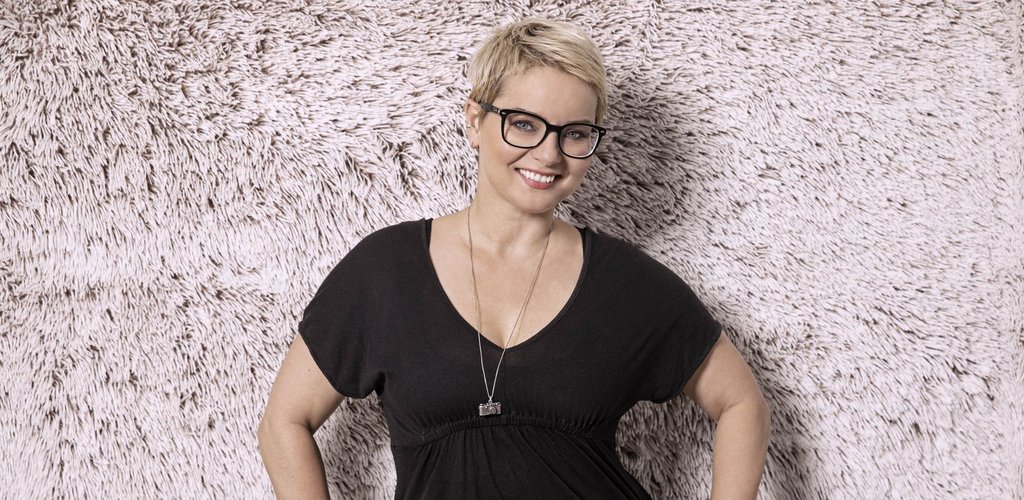The Budapest Festival Orchestra will be presenting a concert based on the works of Franz Liszt and Béla Bartók as part of the Bridging Europe festival series, jointly organized by Müpa Budapest and the BFO. After the interval, one of Bartók's best-loved works, The Miraculous Mandarin, will be performed by the Éva Duda Dance Company, in a plot that explores questions of body and soul. We interviewed the company’s founder and artistic director.
Júlia Váradi: The Éva Duda Dance Company is known for its productions presenting unexpected, unconventional new ideas. This will undoubtedly be the case when you perform The Miraculous Mandarin with the BFO at the Bridging Europe festival. Are you able to reveal what the audience might expect?
Éva Duda: I see this cooperation with Iván Fischer and the Budapest Festival Orchestra as an excellent opportunity. We had previously discussed working together but that was sadly swept away by the pandemic. However, this premiere at the end of September is guaranteed to happen. The orchestra and the Company is going to share the stage when the dancers enter in the second half of the two-part concert debuting at Müpa Budapest. It’s going to be nothing short of ritualistic: the dance floor is going to be surrounded by the musical space, which, in turn, will be surrounded by the audience. The team and I were very excited to start preparing and I sense that an incredibly impactful interpretation is emerging with a stellar cast. We’re working with a theatrical language that, in addition to its novel and contemporary tone, also helps the audience to understand and empathize with the story, as they won’t all necessarily be familiar with the plot.
J.V.: The Miraculous Mandarin is one of Bartók’s most bizarrely themed one-act piece. At the same time it’s one of his most interesting musical compositions. What do you consider especially important, something that you would like to highlight and place an enormous emphasis on in the ballet?
É.D.: The music doesn’t easily give itself away, but it has incredibly exciting layers, which are a joy to unfold and explore. Based on earlier performances and recordings of different versions of the ballet, it was a big revelation to me that contemporary dance goes with this piece unbelievably well, because it fits in with a freer and more relaxed interpretation of the intricate melodies than genres with a more structured form ever could. I was apprehensive at first, because certain compositions can provide such an impactful experience on their own that they can overshadow events on stage, but I can confidently say that we’re working on the material with a lot of enjoyment and in perfect harmony. I am so happy that I can adapt Bartók, because I’ve completely fallen under the spell of the piece.
J.V.: For Bartók, the story that was written by Menyhért Lengyel was not the most important aspect. He didn’t concentrate on the battles and cruelties of the hooligans and the vulnerability of the Mandarin; he focused much more on the power of love instead, and tried with his music to highlight the overwhelming impact of urban life. How central is this to the performance that you’re creating?
É.D.: For me, the entire ballet is an erotic piece of poetry, dominated by exploring ourselves, with our hidden secrets and desires, and the all-consuming power of love. The magnetic field between the characters is present in the music as well. I intend to depict this, along with the internal storms and dramatic turns, in the most striking way possible.
J.V.: Pantomime is a defining element of the Bartókian oeuvre. How is this going to appear in the performance?
É.D.: There is an abundance of movements built on human gestures in the choreography. We take a meticulous approach to developing the style, leaving no room for any unnecessary motions in the movement system. This is precision work at its finest; Bartók provided innumerable instructions in the score, which we follow faithfully. This was Iván’s express wish too, and it works as an excellent guide for me. Although I had concerns earlier, it doesn't limit my creative freedom in any way. The movements might be subtly reminiscent of pantomime in some places, but by no means in a direct form. I’m striving to bring out the essence of the scenes in the richest, most nuanced way possible.
J.V.: Will there be a set, and if so, what will it look like? Or will the music and the choreography speak for themselves?
É.D.: I wouldn’t call it a traditional set. The space is constructed from a very simple but effective platform system, on which we’ll perform the piece. But the most exciting aspect is going to be the spatial relationship of the dancers and the orchestra, which, I hope, is going to be an enthralling experience for onlookers.
J.V.: This is the first time that you’re working with the BFO. What has the experience been like?
É.D.: Iván is such a stunningly charismatic personality; just being in his presence is inspiring, too. The discussions with him and his people have been going on for months, and everyone has been incredibly helpful and professional. It’s a fantastic experience to rehearse like that. After Budapest, we'll be travelling to Rome with the same setup, which is going to be the ultimate crowning event in this exceptional adventure. We’ve got a lot to do until then, though.
Photo by Tamás Lékó

